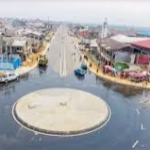
In my previous article, I talked about all that you need to know about business requirements documents for a project. In this article, I want to talk about some of the major components of a business requirements document. Follow me as we are going to look at that in this article.
A Business Requirements Document identifies the reasons why a project is being undertaken or which business or opportunity will address. A well-constructed business requirements document should contain a clear statement of the desired business results expected from the project.
This statement should have, at the minimum, three key elements:
- The expected business result should be stated in measurable business terms, such as reduced cost, improved cash flow, increase margin and so on.
- The desired time frame within which the management team calculates potential risks and rewards. This is also known as management horizons. For example, the project should improve cash flow within six. months.
- The expected cost/benefit or ROI should be declared.
Understanding Business Requirements For Project Execution
In my previous article, I talked about all that you need to know about different types of requirements for projects. In this article, I want to look at all that you need to know about business requirements. Follow me as we are going to look at this together in this article.
Definition
Business Requirements are the pressing organisational needs or market stimuli that drive decision-makers to sponsor projects and prioritise competing projects. They may also be referred to as problems or opportunities.
Business Requirements for projects force management to make critical choices about which project to authorise and when. Business Requirements are typically recorded In a formal business requirements document.
Typical example:
These are the business requirements for a project to develop an e-commerce capability on a large firm’s existing website.
- The desired business result is a 10 percent improvement in gross sales in the short term and a 25 percent annual improvement over the stated management horizon of three years
- The New VP of Sales and Marketing estimated that a 30 percent improvement in the productivity of the sales team will result in an improvement of 10 percent in gross revenue within 90 days and a long-term improvement of 25 percent annually for the next three years.
- Given that the company currently has a topline of $ 50 million improvements in the first 90days. $12.5millon in the first year. $15.6million in the second year, and $19,5million in the third year. The project cost of $27.5milloon will be spread over the next three years. Within a three-year cost of $27.5 million and a three-year benefit of $47.6million, the project will provide a 173 percent return.
Business Requirement Document and Project Concept Definition
During the creation of the project concept definition, the current state and the desired state are established. Much of the information contained in the desired future state and the first two elements of a business requirements document will be similar.
In fact, If the project concept definition contains this information, it can be plugged directly into the business requirements document. However, the expected cost/benefit or ROI and the strategic context for the project will be new information.
It is important to remember that the information contained in this document will serve as the framework for evaluating the relevance of the functional requirements created later in the process.
To Get Email Updates when we post new content, Click Here.





Leave a Reply